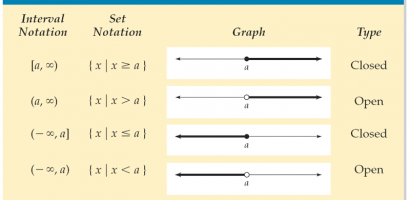A unit circle, as the name implies, is a circle with a radius of one unit. A circle is a closed geometric form that has no angles or sides. However, the unit circle has all of the features of a circle, and its equation is derived from a circle’s equation. A unit circle can also be used to calculate the standard angle values of all trigonometric ratios.
With the use of trigonometric ratios of cos and sin, we will learn the equation of the unit circle and how to represent each point on the circumference of the unit circle.
A unit circle is defined as a circle with a radius of one unit. However, the cartesian coordinate plane is commonly used to depict the unit circle. Moreover, the second-degree equation with two variables x and y is used to represent the unit circle algebraically. However, the unit circle is useful in trigonometry for calculating the values of trigonometric ratios such as sine, cosine, and tangent.
Read Also:What is a stoichiometry calculator and how should you use it?
Our unit circle calculator is a handy online tool that calculates radians, sine values, cosine values, and tangent values based on the circle’s angle. A unit circle, also known as a trigonometry circle, is a circle with a radius equal to one unit.
Unit Circle Calculator Definition
If the angle of the unit circle is input, the unit circle calculator computes the radians, sine value, cosine value, and tangent value. A unit circle, also known as a trigonometry circle, is a circle with a radius of one unit. It aids in the computation of sine, cosine, and tangent values. However, the online Unit Circle Calculator from Cuemath allows you to quickly compute the sine, cosine, and tangent values.
How to Use a Unit Circle Calculator?
To find the sine, cosine, and tangent values, please follow the instructions below:
Step 1: Fill in the input boxes with the angle of the unit circle.
Then, step 2: To determine the sine, cosine, and tangent values, click the “Calculate” button.
Then, step 3: To clear the fields and input alternative values, click the “Reset” button.
Unit Circle Calculator Formula
A circle’s general equation is (x – a)² + (y – b)² = r², which depicts a circle with the centre (a, b) and radius r. This circle equation is simplified to illustrate a unit circle equation. With its centre at (0, 0), the origin of the coordinate axes, and a radius of 1 unit, a unit circle is constructed. As a result, the unit circle’s equation is (x – 0)² + (y – 0)² = 12. However, the equation of a unit circle is obtained by simplifying this.
Unit Circle Equation: x² + y² = 1
The centre of the unit circle is (0,0), and the radius is 1 unit. However, the above equation satisfies all the points lying on the circle across the four quadrants.
How to Find a Unit Circle Calculator?
The generic equation for a circle with a radius of r and a centre of (x1, y1) is as follows:
(x – x1)² + (y – y1)² = r², Where (x, y) are the coordinates of any point lying on the unit circle.
If the centre of the unit circle is at (0, 0) and the radius is 1, then the equation for the unit circle is:
(x – 0)² + (y – 0)² = 12
x² + y² = 1
Using a unit circle, we calculate the trigonometric functions sine, cosine, and tangent.
We can calculate trigonometric values for any angle using the image.
sinθ = Opposite / Hypotenuse = y / 1
sinθ = y, sine is y-coordinate
cosθ = Adjacent / Hypotenuse = x / 1
cosθ = x, cosine is x-coordinate
tanθ = Opposite / Adjacent = y / x
tanθ = y / x
Using pythagoras theorem, x² + y² = 1
Therefore, cos²θ + sin²θ = 1
Lets see an example to understand briefly.
Solved Example:
Find the trigonometric values if the angle of the unit circle is 45°?
Solution:
sin 45° = 1 / √2 = 0.7071
cos 45° = 1 / √2 = 0.7071
tan 45° = 1
Similarly, you can use the calculator to find the sine, cosine, and tangent values for:
Angle of unit circle = 60°
Angle of unit circle = 30°
Unit Circle Calculator Trigonometric Functions
A unit circle can be used to calculate the trigonometric functions of sine, cosine, and tangent. To understand trigonometric functions, apply the Pythagoras theorem in a unit circle. Consider a right triangle in the cartesian coordinate plane, which is centred on a unit circle. However, the hypotenuse of a right triangle is represented by the circle’s radius. Moreover,, the radius vector forms an angle with the positive x-axis, and the radius vector’s endpoint coordinates are (x, y). However, the lengths of the base and altitude of the right triangle are represented by the values of x and y. With the sides 1, x, and y, we now have a right angle triangle. We can obtain the values of the trigonometric ratio using this method in trigonometry:
cos = Base/Hypotenuse = x/1 Unit Circle sin = Altitude/Hypotenuse = y/1 – Ratios Trigonometric
We now have sin = y and cos = x, and we can use this to get tan = y/x. Similarly, the right-angled triangle within the unit circle can be used to find the values of the other trigonometric ratios. We can also get the principal values of these trigonometric ratios by modifying the values.
Unit Circle Calculator Secant
The coordinates(x, y) of any point on the unit circle are equivalent to the trigonometric identities (cos, sin). However, the cosine and sine of any values made by the radius line with the positive x-axis are represented by the coordinates of the endpoint of the radius. We have cos = x and sin = y, which are useful in calculating the other trigonometric ratio values. Taking this a step further, we get tan = sin/cos or tan = y/x.
Another key element to remember is that the sin and cos values are always between 1 and -1, and the radius value is 1, with a negative x-axis value of -1. However, the full circle symbolises a 360° angle, while the circle’s four quadrant lines represent angles of 90°, 180°, 270°, and 360°(0°). Because the cos value is 0 for 90° and 270°, the tan values at these angles are indeterminate.
Example: Using the sin and cos values from the unit circle, find the value of tan 45°.
Solution:
We know that, tan 45° = sin 45°/cos 45°
Using the unit circle chart:
sin 45° = 1/√2
cos 45° = 1/√2
Therefore, tan 45° = sin 45°/cos 45°
= (1/√2)/(1/√2)
= 1
Answer: Therefore, tan 45° = 1
Unit Circle Calculator Radians
A complete angle of 2 radians is represented by the unit circle. And the unit circle is divided into four quadrants by angles of π/2, π/3/2, and 2. However, the standard values, which are applicable to trigonometric ratios, are further within the first quadrant at the angles of 0, π/6, π/4, π/3, π/2. Moreover, the standard angle values of the cosine and sine ratios are represented by the points on the unit circle for these angles. However, the values are repeated across the four quadrants, but with a change in sign, as seen in the diagram below. However, the reference x-axis and y-axis, which are positive on one side and negative on the other, account for the change in sign. We can now easily get the trigonometric ratio values of standard angles across the four quadrants of the unit circle using this method.
Unit Circle Calculator Fractions
Other trigonometric identities such as cotangent, secant, and cosecant can be obtained using the unit circle identities of sine, cosecant, and tangent. However, the reciprocal of the sine, cosine, and tangent are the unit circle identities cosecant, secant, and cotangent. Furthermore, we may calculate the value of tan by dividing sin by cos, and the value of cot by dividing cos by sin.
The unit circle identities for a right triangle set in a unit circle in the cartesian coordinate plane with hypotenuse, base, and altitude measuring 1, x, and y units respectively can be written as,
sinθ = y/1
cosθ = x/1
tanθ = sinθ/cosθ = y/x
sec(θ = 1/x
csc(θ) = 1/y
cot(θ) = cosθ/sinθ = x/y
Unit Circle Calculator Pythagorean Identities
The unit circle can be used to quickly understand and verify the three important Pythagorean identities of trigonometric ratios. However, the Pythagoras theorem states that the square of the hypotenuse in a right-angled triangle equals the sum of the squares of the other two sides. However, the following are the three Pythagorean identities in trigonometry.
sin²θ + cos²θ = 1
1 + tan²θ = sec²θ
1 + cot²θ = cosec²θ
Using the Pythagoras theorem, we will attempt to verify the first identity. Let’s use x and y to represent the legs of a right-angled triangle with a hypotenuse of one unit. However, the equation of a unit circle is x² + y² = 1 when Pythagoras’ theorem is applied. In a unit circle, x = cos and y = sin, and when we apply this to the Pythagoras theorem, we get cos²θ + sin²θ = 1. Using the Pythagoras theorem, we were able to verify the first identity. We can similarly prove the other two Pythagorean identities within the unit circle.
Unit Circle Calculator Trigonometric Values
A unit circle can be used to compute the various trigonometric identities and their principal angle values. However, the x-coordinate of the unit circle is cosine, and the y-coordinate is sine. Let us now find their respective values for θ = 0°, and θ = 90º.
For θ = 0°, the x-coordinate is 1 and the y-coordinate is 0. Therefore, we have cos0º = 1, and sin0º = 0. Let us look at another angle of 90º. Here the value of cos90º = 1, and sin90º = 1. Further, let us use this unit circle and find the important trigonometric function values of θ such as 30º, 45º, 60º. Also, we can also measure these θ values in radians. We know that 360° = 2π radians. We can now convert the angular measures to radian measures and express them in terms of the radians.
Unit Circle Calculator Pi
Unit Circle Table:
With the use of trigonometric ratios, the unit circle table is used to identify the coordinates of the points on the unit circle that correspond to common angles.
| Angle θ | Radians | Sinθ | Cosθ | Tanθ = Sinθ/Cosθ |
| 0° | 0 | 0 | 1 | 0 |
| Then, 30° | Similarly, π/6 | Then, 1/2 | Similarly, √3/2 | Then, 1/√3 |
| Then, 45° | Similarly, π/4 | Then, 1/√2 | Similarly, 1/√2 | Then, 1 |
| Also, 60° | Likewise, π/3 | Also, √3/2 | Likewise, 1/2 | Also, √3 |
| Also, 90° | Likewise, π/2 | Also, 1 | Likewise, 0 | Also, undefined |
We can find the secant, cosecant, and cotangent functions also using these formulas:
secθ = 1/cosθ
cosecθ = 1/sinθ
cotθ = 1/tanθ
The first quadrant’s unit circle has been explored. We can extend and determine the radians for all of the unit circle quadrants in the same way. However, the numbers 1/2, 1/√2, √3/2, 0, 1 repeat along with the sign in all 4 quadrants.
Unit Circle Calculator Coordinates
| Angles – Coordinates |
| 0° (1,0) |
| Then, for 30° (√3/2, 1/2) |
| Then, for 45° (1/√2, 1/√2) |
| Similarly, for 60° (1/2, √3/2) |
| Similarly, for 90° (0,1) |
Unit Circle Calculator in Complex Plane
A unit circle is made up of all complex numbers with the same absolute value as one. As a result, |z| = 1 is the equation. Any complex number z = x + iy with the equation z = x + iy will lie on the unit circle. x² + y² = 1.
In a complex plane, the unit circle can be thought of as a set of unit complex numbers z provided by the form,
z = e^it = cos t + sin t = cis(t)
The relation given above represents Euler’s formula.
Unit Circle Calculator Point
It all depends on what you want to remember. When it comes to the unit circle, there are two things to remember: angle conversion, or how to convert an angle in degrees to one in (unit circle radians); and the trigonometric functions of the main angles.
Let’s begin with the simpler first section. However, the most crucial angles are those that you’ll use on a regular basis:
30° = π/6
45° = π/4
60° = π/3
90° = π/2
180° = π
and full angle, 360° = 2π
Because these angles are so prevalent, attempt to memorise them. You can use the angle conversion formula to convert any other angle:
radians = π /180° * degrees radians = π /180° * degrees radians = π /180° *
Converting the radians of the unit circle to degrees should no longer be a difficulty!
Unit Circle Calculator Examples
Example 1:
Does the point P (1/2, 1/2) lie on the unit circle?
Solution:
We know that equation of a unit circle is:
x2 + y2 = 1
Substituting x = 1/2 and y = 1/2, we get:
= x2 + y2
= (1/2)2 + (1/2)2
= 1/4 + 1/4
= 1/2
≠ 1
Since, x2 + y2 ≠ 1, the point P (1/2, 1/2) does not lie on the unit circle.
Answer: Therefore (1/2, 1/2) doesn’t lie on the unit circle.
Example 2:
Find the exact value of tan 210° using the unit circle.
Solution:
We know that
tan 210° = sin 210°/cos210°
Using the unit circle chart:
sin 210° = -1/2
cos 210° = -√3/2
Therefore,
tan 210° = sin 210°/cos 210°
= (-1/2)/(-√3/2)
= 1/√3
Answer: Therefore, tan 210° = 1/√3
Example 3:
Using a unit circle chart, get the value of sin 900°.
Solution:
Let us represent 900° in terms of 360° because the unit circle has 0°-360°.
900° is equal to two full 360° rotations plus an additional 180° rotation.
As a result, 900° and 180° share the same trigonometric ratio.
As a result, sin 900° equals sin 180°.
We can deduce the following from the unit circle chart:
180° sin = 0
900° sin = 0 is the answer.
FAQs on Unit Circle Calculator
What is Unit Circle in Math?
We named a circle with a radius of one unit as a unit circle. In general, a unit circle is drawn in the coordinate plane with the origin as its centre. However, the unit circle with a radius of one unit and a centre at (0, 0) has the equation x2 + y2 = 1. In addition, in trigonometry, we utilize the unit circle to obtain the principal values of sine and cosine trigonometric ratios.
How Do You Find Sin and Cos Using the Unit Circle?
One can use the unit circle to calculate sin and cos values. Let us pick a radius inclined to the positive x-axis at an angle of and the endpoint of the radius as in a unit circle with radius 1 unit and the centre at (0, 0). (x, y). Form a right-angled triangle with the radius as the hypotenuse by drawing a perpendicular from the end of the radius to the x-axis. However, the x value is on the adjacent side of the triangle, the y value is on the opposite side, and the hypotenuse is one unit. Using the trigonometric ratio formula, we can obtain sin = Opp/Hyp = y/1 and cos = Adj/Hyp = x/1. As a result, sinθ = y and cosθ = x.
What is the Unit Circle Definition of Trig Functions?
We can use the unit circle to determine the trigonometric function for the principal values. If we include the radius at an angle and the endpoint of the radius vector is (x, y), then cosθ = x and sinθ = y for a unit circle with the centre at (0, 0) and a radius of 1 unit. Furthermore, these two numbers can be used to derive all other trigonometric ratios. Changing the value can also be used to compute the principal values.
How to Find Terminal Point on Unit Circle?
The equation of the unit circle x² + y² = 1 can be used to get the terminal point on a unit circle. However, the given point is a point on the unit circle if it fulfills this equation. Furthermore, by determining the values of cosθ and sinθ, the terminal point on the unit value can be determined.
What is the Equation of Unit Circle?
A unit circle’s equation is x² + y² = 1. We can define the unit circle as having its centre at the origin (0, 0) of the coordinate axes and a radius of one unit. We used the distance formula to construct the equation for the unit circle.
How Do You Derive the Equation of a Unit Circle?
We can use the distance formula in coordinate geometry to compute the equation of a unit circle. For a circle with a radius of one unit and a centre at (0, 0), we can take any point on the circle as (x, y). Using the distance formula and the definition of a circle, we can calculate the distance.(x – 0)2 + (y – 0)2 = 1, which can be simplified as x2 + y2 = 1.
When is Tan Undefined on the Unit Circle?
The unit circle having an equation of x2 + y2 = 1 is helpful to find the trigonometric ratios of sinθ = y and cosθ = x. Using these values we can conveniently find the value of tanθ = sinθ/cosθ = y/x. Tanθ will be undefined for cosθ = 0, i.e., when θ is equal to 90° and 270°.
What is the Connection Between Right Triangles and the Unit Circle?
Right triangles and a unit circle have a special relationship. We can view any point on the unit circle as a right triangle, with the radius serving as the hypotenuse and the point’s coordinates serving as the other two sides. However, the equation x² + y² = 1 completely satisfied the Pythagoras theorem for the right triangle. However, the right triangle within the unit circle is also useful for calculating trigonometric ratios.
What is the Unit Circle Used for?
In trigonometry, the unit circle is quite useful. However, the primary angle values of 0°, 30°, 45°, 60°, and 90° for the trigonometric ratios sinθ, cosθ, and tanθ may be simply determined using the unit circle. In the argand plane we can use the unit circle to represent complex numbers.
What are the Quadrants of the Unit Circle?
The unit circle has four quadrants, which correspond to the coordinate system’s quadrants. However, the four quadrants have the same area and make up one-fourth of the circle’s total area. At the centre of the circle, each of the quadrants subtends a 90o or straight angle.
How Do you Describe a Unit Circle in Terms of Complex Numbers?
Because every complex number z = x + iy y will lie on the unit circle with the equation x2 + y2 = 1, any complex number z = x + iy y will lie on the unit circle with the equation x2 + y2 = 1. As a result, we can write the unit circle’s equation as |z| =1.




